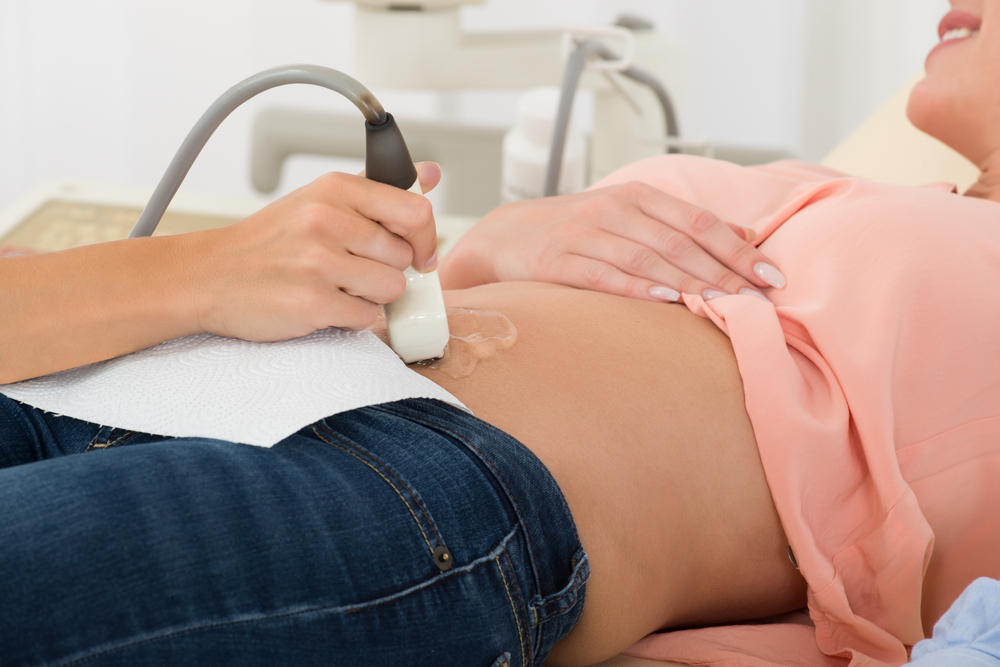Water birth is a childbirth option where a woman labors and sometimes delivers in a pool or tub of warm water. This method is increasingly popular among women seeking a more natural and soothing birthing experience. The idea behind water birth is simple—warm water helps relax the body, ease labor pains, and create a calming environment for both the mother and baby. At May-Grant OB/GYN, we offer guidance and support for women interested in water birth, providing safe and respectful care for families in Lancaster and our other service locations.
While water birth is often associated with home births or birthing centers, it can also be integrated into hospital-based deliveries when properly planned and supported by experienced providers. Women who choose water birth often do so because it allows them to feel more in control, less restricted, and more comfortable during labor. As part of our holistic approach to maternity care, we believe in giving women a range of choices to suit their needs and birthing goals.
Pain Management and Physical Comfort
One of the primary benefits of water birth is its ability to reduce labor pain naturally. Warm water helps soothe tense muscles, relieve pressure on the joints, and promote a sense of relaxation that may shorten the duration of labor. Immersion in water can also increase a woman’s ability to cope with contractions by offering a cushion-like effect that supports the body. This can result in fewer requests for medical pain relief such as epidurals or narcotics.
Many women also find that laboring in water allows for better movement and positioning. In a traditional hospital bed, mothers may feel confined or restricted. In contrast, a birthing tub allows for greater flexibility, enabling women to shift their posture as needed for comfort and effective pushing. Being immersed in water may also reduce the sensation of gravity, which lessens the discomfort of pressure on the lower back and pelvis. At May-Grant OB/GYN, our team works closely with mothers to monitor safety and comfort throughout the labor process, whether in or out of the tub.
Emotional Benefits and a Calming Environment
Labor can be an intense experience, and emotional support plays a vital role in how women cope with the demands of childbirth. Water has a calming effect on the nervous system, helping to lower stress levels and encourage deep breathing. For many women, the feeling of being supported by water enhances their sense of privacy, safety, and control. This environment often leads to decreased anxiety and increased focus, which can positively impact the progression of labor.
The sensory input of warm water—its temperature, buoyancy, and gentle motion—contributes to an overall feeling of calm. This can be especially beneficial for women who may feel overwhelmed by the sterile or clinical environment of a typical hospital room. Dim lighting, soft music, and a supportive birth team can enhance the soothing nature of water birth, making it a deeply personal and empowering experience. At May-Grant OB/GYN, we emphasize the emotional and psychological well-being of mothers during labor and offer water birth as a way to support those preferences.
Gentle Transition for the Baby
Advocates of water birth often highlight its potential benefits not only for mothers but also for newborns. Babies are surrounded by amniotic fluid in the womb, so being born into warm water may provide a gentler transition to life outside the uterus. The environment is quiet, warm, and less stimulating than a typical delivery room. This may lead to calmer initial moments for the baby and promote early bonding with the mother.
Some midwives and practitioners also report that babies born in water show smoother respiratory transitions and reduced stress responses. The baby’s first breath is triggered once they are exposed to air, not water, so safety protocols are in place to ensure they are gently brought to the surface immediately after birth. While more research is ongoing, many families find the idea of a peaceful, low-intervention birth appealing and aligned with their desire for a natural delivery. Our providers at May-Grant OB/GYN are trained to ensure all water births are conducted with careful monitoring and safety considerations in mind.
When Water Birth May Not Be Recommended
While water birth offers many benefits, it may not be suitable for everyone. Certain medical conditions, pregnancy complications, or fetal concerns may make a water birth less advisable. For example, women with high-risk pregnancies, breech babies, or preterm labor may need more medical monitoring than a water birth can provide. Similarly, women who are experiencing heavy bleeding or infections are typically advised against delivering in water.
At May-Grant OB/GYN, safety always comes first. Before moving forward with a water birth plan, our providers perform a thorough evaluation to determine whether this method is appropriate for the mother and baby. We also educate families about possible transitions out of the tub if medical needs arise. Being flexible and informed helps women feel confident in their choices while keeping their health and their baby’s health as the top priority.
Enhancing Birth Experiences Through Choice
Every woman deserves to feel heard and respected throughout her pregnancy and childbirth journey. Water birth offers a valuable option for those who want a more natural, gentle, and empowering experience. Whether it’s the pain relief, increased mobility, emotional support, or newborn bonding that appeals most, water birth represents a meaningful choice in maternity care. For many women, it is not only about how they give birth—but how they feel while doing it.
At May-Grant OB/GYN, we support a wide range of birth preferences and are proud to offer experienced guidance for women considering water birth in Lancaster and our surrounding locations. We believe that informed choice is key to a positive birth experience, and our team is here to walk alongside you with evidence-based information, respectful care, and a commitment to your safety and satisfaction.
Sources:
Cluett, E. R., & Burns, E. (2009). Immersion in Water in Labour and Birth. Cochrane Database of Systematic Reviews.
Gilbert, R. E., & Tookey, P. A. (1999). Perinatal Mortality and Morbidity Among Babies Delivered in Water: Surveillance Study and Retrospective Cohort Study. BMJ.
Nutter, E., Meyer, S., Shaw-Battista, J., & Marowitz, A. (2014). Waterbirth: An Integrative Analysis of Peer-Reviewed Literature. Journal of Midwifery & Women’s Health.








